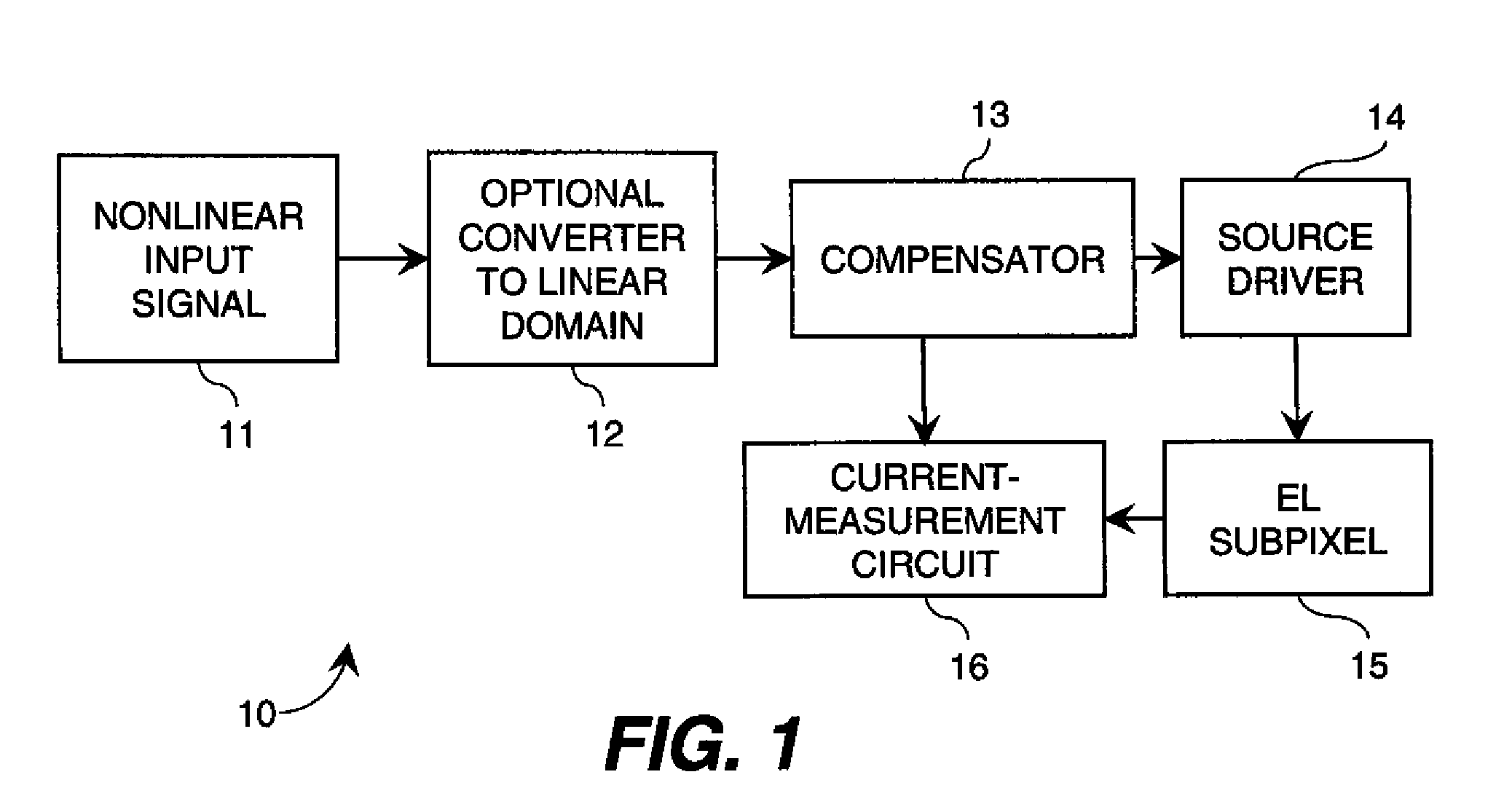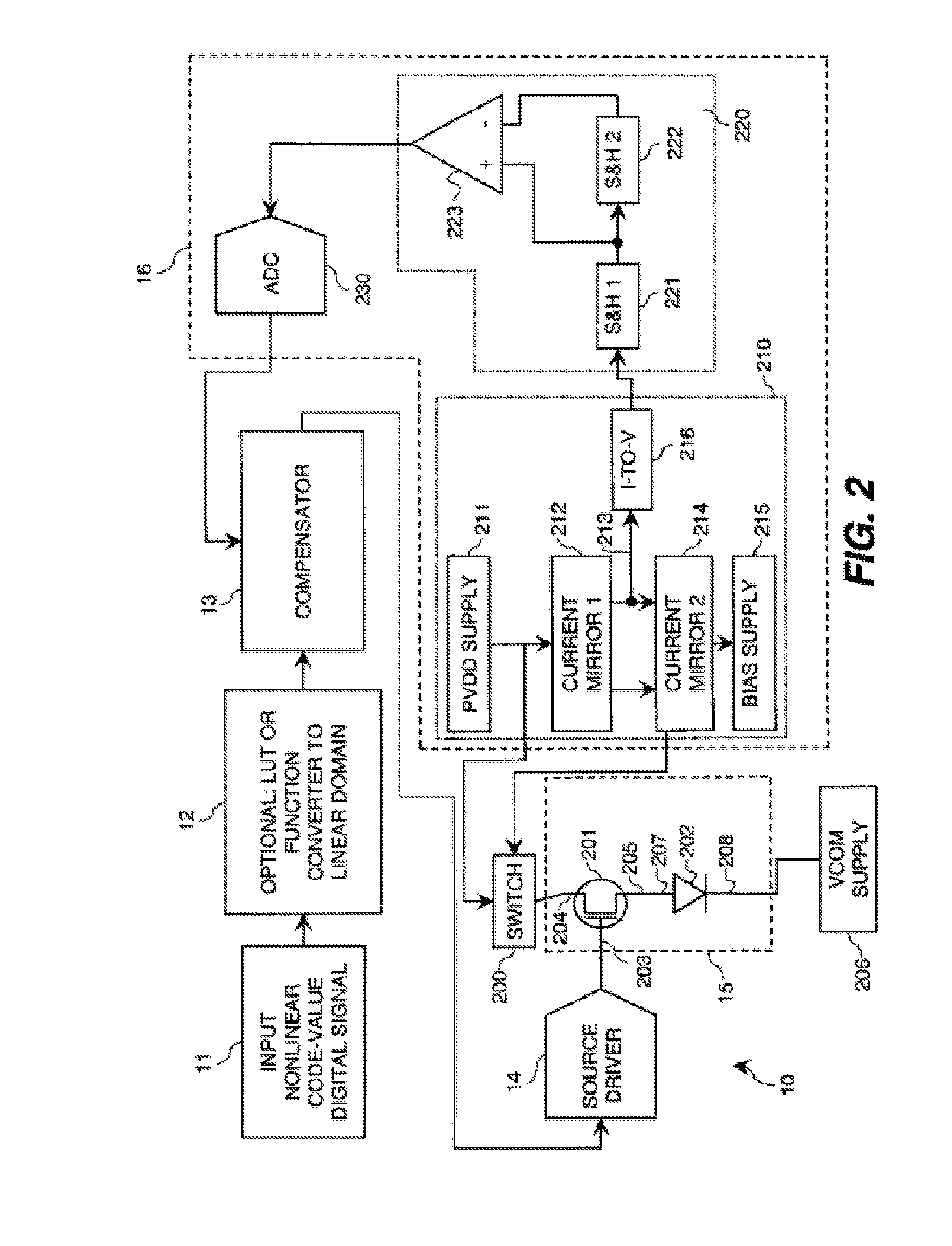Electroluminescent display initial-nonuniformity-compensated drve signal
a technology of drve signal and drve signal, which is applied in the field of drve signal initialnonuniformitycompensation, can solve the problems of oled display non-uniformity, limiting the quality of display, and objectionable non-uniformity, so as to reduce the aperture ratio of a subpixel, simplify the compensation of control signal, and improve the yield of good panels
- Summary
- Abstract
- Description
- Claims
- Application Information
AI Technical Summary
Benefits of technology
Problems solved by technology
Method used
Image
Examples
Embodiment Construction
[0033]The present invention compensates for initial nonuniformity of all subpixels on an electroluminescent (EL) panel, e.g. an active-matrix OLED panel. A panel includes a plurality of pixels, each of which includes one or more subpixels. For example, each pixel might include a red, a green, and a blue subpixel. Each subpixel includes an EL emitter, which emits light, and surrounding electronics. A subpixel is the smallest addressable element of a panel.
[0034]The discussion to follow first considers the system as a whole. It then proceeds to the electrical details of a subpixel, followed by the electrical details for measuring one subpixel and the timing for measuring multiple subpixels. It next covers how the compensator uses measurements. Finally, it describes how this system is implemented in one embodiment, e.g. in a consumer product, from the factory to end-of-life.
Overview
[0035]FIG. 1 shows a block diagram of the display system 10 of the present invention. This figure shows d...
PUM
 Login to View More
Login to View More Abstract
Description
Claims
Application Information
 Login to View More
Login to View More - R&D
- Intellectual Property
- Life Sciences
- Materials
- Tech Scout
- Unparalleled Data Quality
- Higher Quality Content
- 60% Fewer Hallucinations
Browse by: Latest US Patents, China's latest patents, Technical Efficacy Thesaurus, Application Domain, Technology Topic, Popular Technical Reports.
© 2025 PatSnap. All rights reserved.Legal|Privacy policy|Modern Slavery Act Transparency Statement|Sitemap|About US| Contact US: help@patsnap.com



